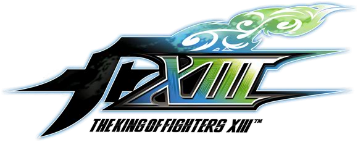

Counterhits
As in other fighting games, a Counterhit (abbreviated as CH) occurs when a player hits an opponent with an attack while said opponent was also using an attack. In essence, they occur when one player counters and hits the opposing player's attack such as from choosing the correct anti-air to landing a frametrap. In KOFXIII landing a Counterhit can cause a variety of positive effects for a player:
Universal Traits
- Any attack that causes a Counterhit will deal additional damage varying from a 20-40% increase.
- With certain specials, DMs, and Neomaxes little if no Counterhit damage is applied. These are typically the multi-hitting 'ranbu' moves as the first hit deals 0 damage so the total damage remains the same. Other cases just don't apply CH damage such as with Iori's

 +
+  +
+  . It's really worth knowing which moves cause great damage on Counterhit while being built in for utility such as Athena's
. It's really worth knowing which moves cause great damage on Counterhit while being built in for utility such as Athena's 
 +
+  which is used as an anti-air and will automatically deal more damage if an opponent had thrown out an aerial move.
which is used as an anti-air and will automatically deal more damage if an opponent had thrown out an aerial move.
- With certain specials, DMs, and Neomaxes little if no Counterhit damage is applied. These are typically the multi-hitting 'ranbu' moves as the first hit deals 0 damage so the total damage remains the same. Other cases just don't apply CH damage such as with Iori's
- An opponent Counterhit out of the air is placed in a free jugglable state, allowing for a followup.
- This mostly applies to when anti-airing an opponent with normal moves. Light attacks can be followup up, but the opponent will reset out of a hittable state fast leaving little room for confirming a Counterhit. Heavy normals generally launch the opponent higher while leaving an opponent vulnerable for a longer window of time, making a followup hit more reasonable. In some cases special moves can score a Counterhit and allow a followup. For example, if Shen's
 +
+  trades against a jumping opponent Shen will recover on the ground fast enough for him to land his
trades against a jumping opponent Shen will recover on the ground fast enough for him to land his 
 +
+  DM.
DM. - The most common way to utilize this property is from a CH j.
 +
+ during an air-to-air attempt. The player must touch the ground first before being able to input a followup, which gives the player the duration of the airtime to confirm a Counterhit. Connecting a j.
during an air-to-air attempt. The player must touch the ground first before being able to input a followup, which gives the player the duration of the airtime to confirm a Counterhit. Connecting a j. +
+ will knock the opponent higher and toward the corner, which can limit the player's followup opportunities depending on spacing or meter availability. Almost every character can universally Superjump again into another j.
will knock the opponent higher and toward the corner, which can limit the player's followup opportunities depending on spacing or meter availability. Almost every character can universally Superjump again into another j. +
+ for an additional hit that places the opponent deep toward the corner. With meter or the corner to work with, a player can turn an aerial Counterhit into big damage.
for an additional hit that places the opponent deep toward the corner. With meter or the corner to work with, a player can turn an aerial Counterhit into big damage.
- This mostly applies to when anti-airing an opponent with normal moves. Light attacks can be followup up, but the opponent will reset out of a hittable state fast leaving little room for confirming a Counterhit. Heavy normals generally launch the opponent higher while leaving an opponent vulnerable for a longer window of time, making a followup hit more reasonable. In some cases special moves can score a Counterhit and allow a followup. For example, if Shen's
Wallbounce
- Certain attacks, usually specials or DMs (although Daimon's j.
 +
+  also works here as well), will bounce an opponent off of the wall when done as a Counterhit. Maxima's
also works here as well), will bounce an opponent off of the wall when done as a Counterhit. Maxima's  +
+  is the poster boy of wallbounces, dating back in this 'counterwire' property to The King of Fighters '02. The positioning between the player and opponent after the bounce can change the available followup options due to spacing, but the bounced opponent is in a free juggle state when falling.
is the poster boy of wallbounces, dating back in this 'counterwire' property to The King of Fighters '02. The positioning between the player and opponent after the bounce can change the available followup options due to spacing, but the bounced opponent is in a free juggle state when falling.